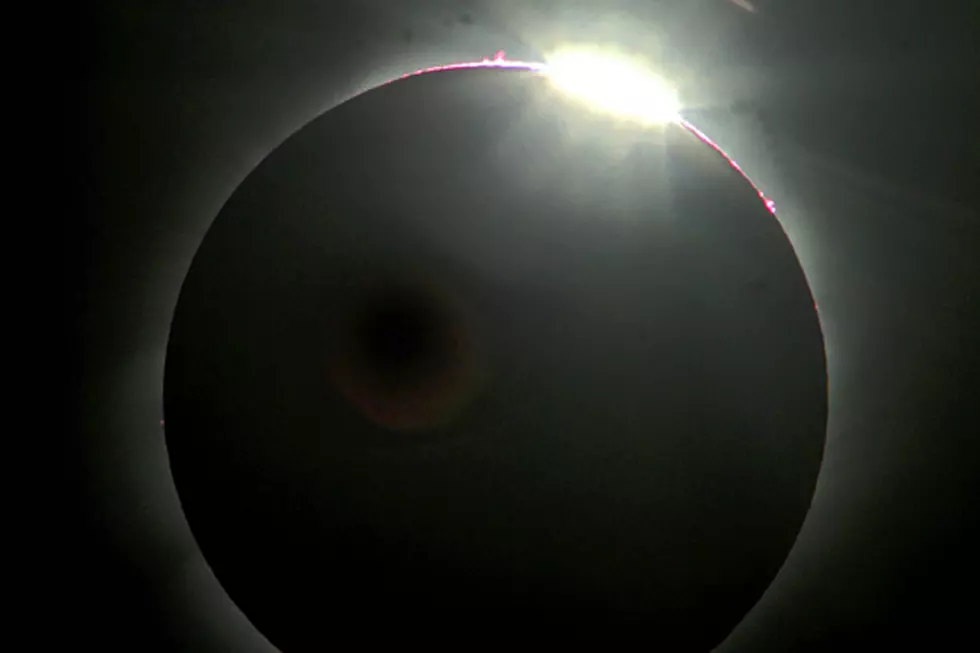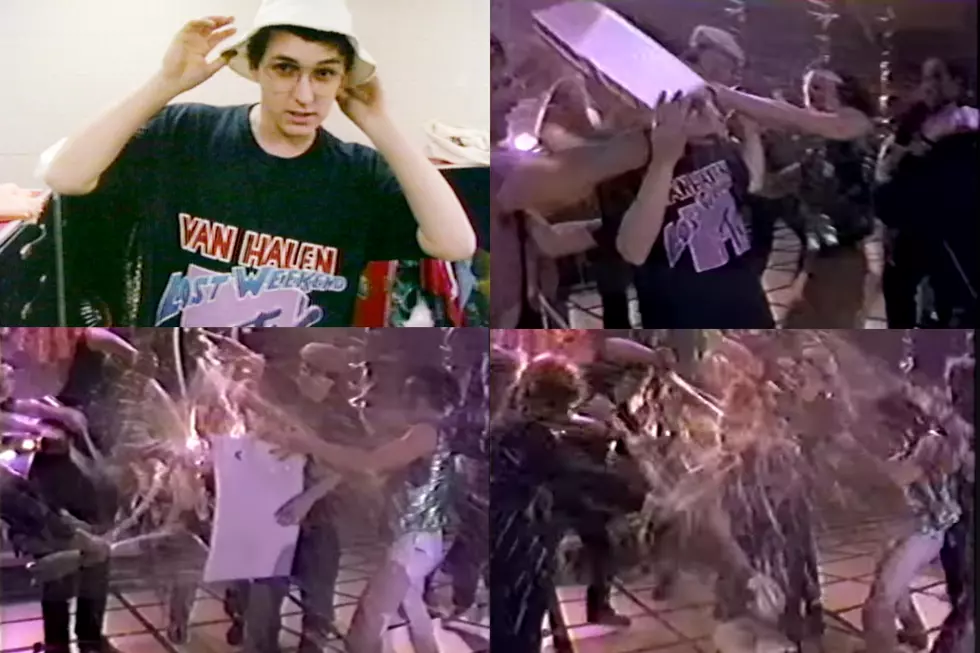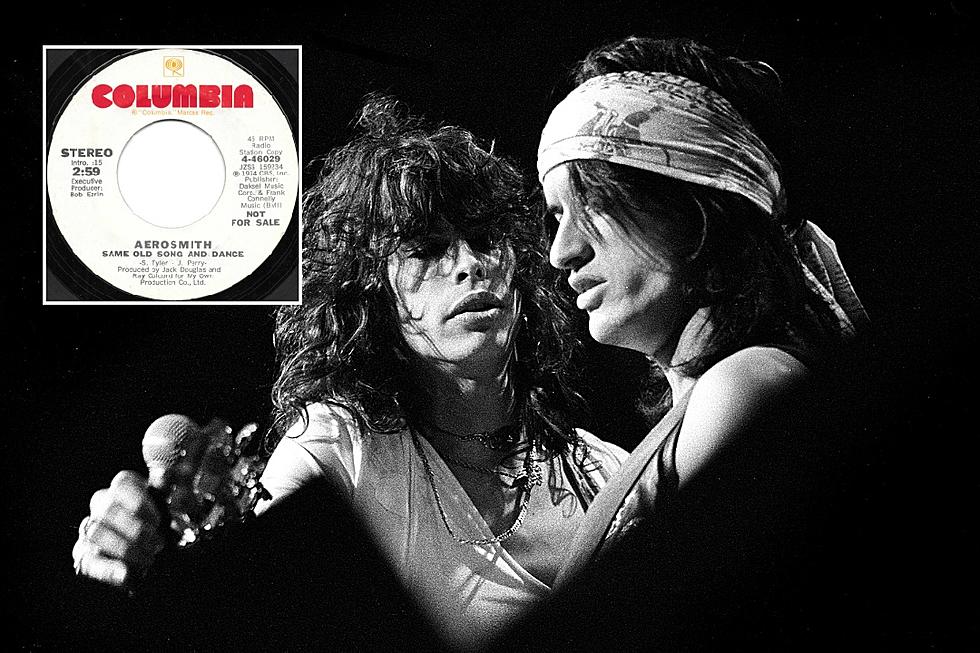
How Diamond Head’s First Album Accidentally Became a Metal Cornerstone
Released on Oct. 3, 1980, Diamond Head’s debut album was a stone-cold classic of the New Wave of British Heavy Metal. Lightning to the Nations ended up inspiring some of the biggest names in heavy metal’s future, most famously Metallica.
But how “official” can this release date really be when said album was recorded, produced, and distributed independently by the band itself to select U.K. record stores and assorted rock critics in a plain white sleeve? In fact, the record didn’t even have a title. People simply started referring to it as Lightning to the Nations (if they didn’t simply call it the White Album) because that was the name of its first song.
Ultimately, this confusing and highly unorthodox anecdote could be seen as a microcosm of Diamond Head’s entire career. They began in 1976 in the West Midlands town of Stourbridge, England, when schoolmates Brian Tatler (guitar) and Duncan Scott (drums) started jamming before recruiting singer Sean Harris and, later, bassist Colin Kimberley.
Even as they tried to make some inroads into the local pub circuit, however, the fledgling Diamond Head were swimming upstream against the floodwaters of punk rock – like many of their future N.W.O.B.H.M. peers. Finally, in late 1979, they took matters into their own hands by financing and pressing a pair of singles, "Shoot Out the Lights" and "Sweet and Innocent,” followed in short order by what they originally perceived as a seven-song demo that accidentally became their “first album.”
Luckily, when these recordings started trickling into the hands of U.K. rock critics, the N.W.O.B.H.M. was in full swing, and thus word quickly spread about this unknown band, coming out of nowhere with one of the year’s most astonishing heavy metal records. As Geoff Barton, the hard rock editor for weekly music paper Sounds, raved, “there are more good riffs in your average single Diamond Head song than there are in the first four Black Sabbath albums.”
Beyond the British press’ notorious penchant for hyperbole, one should take heed of the way Iron Maiden leader Steve Harris recalled events in his band’s authorized biography, saying Diamond Head "looked like they were going to be the next Led Zeppelin for a while."
All this praise was hardly without merit, since Diamond Head’s songwriting versatility and ambition — led by wunderkid guitarist Tatler — were well beyond their early-twenty-something years, ranging from the classy melodic metal of the title cut, to the organ-enhanced gallop of “The Prince,” to the near-10-minute sensual grind of “Sucking My Love” (where Sean Harris wailed like Robert Plant and Freddie Mercury’s love child).
Listen to Diamond Head's 'Lightning to the Nations'
And that was just side one. The second half doubled1 down with the multi-part staccato glories of “Am I Evil?” (essentially classical composer Gustav Holst’s “Mars, the Bringer of War” on steroids and witchcraft), the infectious hooks of “Sweet and Innocent” (the album’s only rather weak link), the relentless groove of “It’s Electric,” and the concluding, head-down, fists-up, head-banging of “Helpless.” By any estimation, this was a tour de force of inventive, aggressive, but supremely-well arranged heavy metal, that bridged the transition between the ‘70s and ‘80s as well as any N.W.O.B.H.M. release.
So how did such a monstrous metal accomplishment sink into oblivion almost as quickly as it had exploded onto the scene? While many people have their own take on the matter, the overall problem seems to have been that Diamond Head’s own D.I.Y. ethics may have been their undoing. Even though the buzz surrounding Lighting to the Nations had record companies lining up to sign them (and booking agents doing the same to schedule concert dates), the band’s unprofessional management team (led by Harris' mother), rejected most offers outright until serious momentum had been lost.
By the time Diamond Head finally inked a deal with MCA Records, their inconsistent, over-produced 1982 follow-up Borrowed Time was virtually dead on arrival, and things only deteriorated from there as they descended into AOR on 1983’s Canterbury. Were it not for the enthusiastic patronage of Metallica, who pretty much learned to write songs based on Diamond Head’s example — only faster — the four lads from Stourbridge might still languish among other quality footnotes in N.W.O.B.H.M. annals such as Angel Witch and Trespass.
As it was, Diamond Head were instead given the opportunity to record another very solid hard rock album (1993’s Death & Progress) and tour sporadically, while hopefully pocketing some decent change in songwriting royalties thanks to Metallica’s numerous cover versions.
All the while, though, legitimate copies of Lightning to the Nations became priceless collector’s items, especially after the masters were temporarily lost, forcing the release of a heavily edited and augmented collection named Behold the Beginning, followed by a ‘90s Metal Blade CD reissue using the same doctored mixes. It wasn't until 2001 that the original masters were recovered (or at least hunted down to provide a second generation transfer) and restored to close to their original, raw perfection, by Sanctuary Music, to the relief of diligent heavy metal historians.
Despite these travails, though, the legend of that unnamed Diamond Head album — the white one, or Lightning to the Nations, or whatever — has gone down forever in heavy metal lore, along with the quartet's legacy, as one of the style’s ultimate underdogs done good. And that, of course, is the very definition of what a heavy metal band should be.
Top 50 Classic Heavy Metal Albums
More From Ultimate Classic Rock









